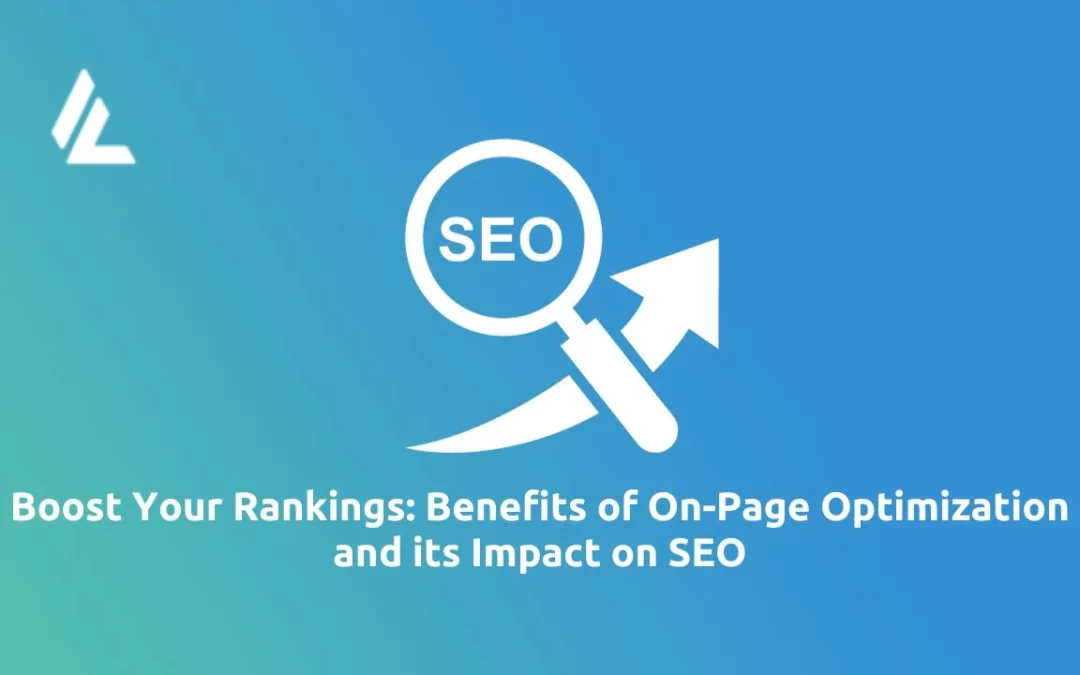Table of Contents
In the expansive and ever-evolving digital marketing landscape, the significance and benefits of on-page optimization in influencing search engine rankings cannot be overstated. On-page optimization is a cornerstone strategy intricately woven into a website’s success in the highly competitive online environment.
This multifaceted approach involves fine-tuning various elements within individual web pages to align with search engine algorithms and enhance the site’s visibility on search engine result pages (SERPs). The continuous evolution of search engine algorithms and user behavior necessitates an agile and strategic on-page optimization methodology.
It goes beyond mere technical adjustments; it encompasses a dynamic understanding of user intent, content relevance, and technical intricacies, ensuring that a website ranks higher and provides a seamless and valuable experience to its audience.
As search engines become increasingly sophisticated, on-page optimization emerges as a linchpin. This foundational strategy improves rankings and establishes a digital presence that resonates with users and adapts to the ever-changing digital landscape.
This comprehensive guide explores the multifaceted benefits of on-page optimization and sheds light on its pivotal role in enhancing SEO performance.
Understanding On-Page Optimization
Before delving into the profound impact on-page optimization has on SEO, it’s crucial to establish a comprehensive understanding of the intricacies encompassed by this essential digital marketing strategy. At its core, on-page optimization is a meticulous process that fine-tuns individual web pages to achieve higher rankings and garner more relevant traffic from search engines.
This intricate methodology involves a multifaceted approach, emphasizing the strategic optimization of diverse elements within a webpage. Features such as content, meta tags, headers, and other on-page factors are pivotal in shaping a website’s visibility on search engine result pages.
By honing in on these specific aspects, on-page optimization seeks to align a webpage’s content with search engine algorithms, ensuring that the content is relevant and easily discoverable by users searching for information or solutions.
In essence, on-page optimization forms the bedrock of an effective SEO strategy, facilitating improved visibility and accessibility for websites in the vast landscape of the digital sphere.
Also, you can go through our blog where we have discussed our Search Engine Optimization Complete Guide for you to gain the necessary knowledge to move forward with your SEO journey and understand the benefits of on-page optimization.

The Benefits of On-Page Optimization
Improved Search Engine Rankings: The Core Advantage
The primary objective of on-page optimization is to enhance a website’s visibility in search engine results. By strategically optimizing on-page elements, you increase the likelihood of search engines recognizing the relevance and value of your content, consequently improving your rankings.
Enhanced User Experience: Keeping Visitors Engaged
User experience is paramount in today’s digital landscape. When done right, on-page optimization contributes to a seamless and user-friendly experience. Enhanced user experience includes faster page load times, mobile responsiveness, and straightforward navigation, increasing user satisfaction and prolonged engagement.
Learn how to create an SEO-optimized web development page for a better SEO experience.
Targeted Traffic Generation: Attracting the Right Audience
On-page optimization attracts targeted traffic by aligning on-page elements with relevant keywords and search intent. Targeted traffic generation means the visitors landing on your page are more likely to be interested in your content, products, or services, increasing the chances of conversion.
Better Click-Through Rates (CTRs): Enticing Users to Click
Crafting compelling title tags and meta descriptions as part of on-page optimization influences rankings and serves as your website’s virtual storefront. A well-optimized snippet can entice users to click through to your site, leading to higher CTRs and improved organic traffic.
Strengthened Brand Authority: Building Trust with Users
Consistently applying on-page optimization practices showcases a commitment to providing valuable and relevant content. Over time, this contributes to establishing your brand as an authoritative and trustworthy source within your industry or niche.
Which On-Page Element Carries the Most Weight for SEO?
The question of which on-page element carries the most weight for SEO is a nuanced one. While all on-page elements play a role in influencing rankings, the title tag emerges as a pivotal factor.
Title Tags: The Weight of First Impressions
Title tags, those succinct HTML elements that define the title of a webpage, carry significant weight in the eyes of search engines. These tags directly impact rankings and serve as users’ first interaction with your SERP’s content.
Factors Contributing to Title Tags’ Weight:
- Keyword Placement: Including the target keyword in the title tag signals relevance to search engines.
- Click-Through Rate (CTR): A well-crafted title tag can increase CTRs, positively influencing rankings.
- User Experience: Optimized title tags contribute to a positive user experience, aligning with search intent.
While title tags bear substantial importance, it’s crucial to emphasize that on-page optimization is most effective when approached holistically. The synergy between elements, including meta descriptions, headers, and content, collectively contributes to a robust SEO strategy.
Best Practices for On-Page Optimization
To maximize the advantages of on-page optimization, adhere to these essential best practices. Conduct thorough keyword research to pinpoint pertinent and high-performing keywords for your content.
Develop optimized content by seamlessly integrating identified keywords, ensuring it is high-quality and engaging. Craft compelling title tags and meta descriptions that accurately represent the content and encourage user interaction. Structure your content effectively using header tags (H1, H2, H3) to enhance readability for both users and search engines.
Optimize images through descriptive file names and alt tags, improving accessibility and SEO. Boost content credibility by incorporating relevant internal and external links. Prioritize mobile optimization to cater to the growing mobile user base, acknowledging its significant impact on rankings.
Enhance user experience and search engine rankings by optimizing your website’s loading speed. Conduct regular on-page SEO audits to identify and address issues impacting your site’s performance proactively.
Still stuck on how to rank your website organically, try IndoAge’s digital marketing services for improved SEO and outrank your competitors for maximum profitability.
Conclusion
In the dynamic field of digital marketing, on-page optimization proves indispensable, serving as a cornerstone for the success of online endeavors. Its merits span from bolstering search engine rankings to enriching user experience and drawing targeted traffic.
While title tags hold notable sway in on-page SEO, it’s imperative to perceive on-page optimization as a comprehensive strategy. A synchronized approach to various elements and an awareness of evolving SEO trends position a website for enduring success and heightened visibility in the fiercely competitive digital arena.
By embracing the transformative influence of on-page optimization, one can elevate rankings, enhance user experience, and fully unlock the potential of their online presence. Recognizing that the benefits extend beyond search engines, resonating with the audience, and cultivating enduring trust and credibility over time is crucial.

